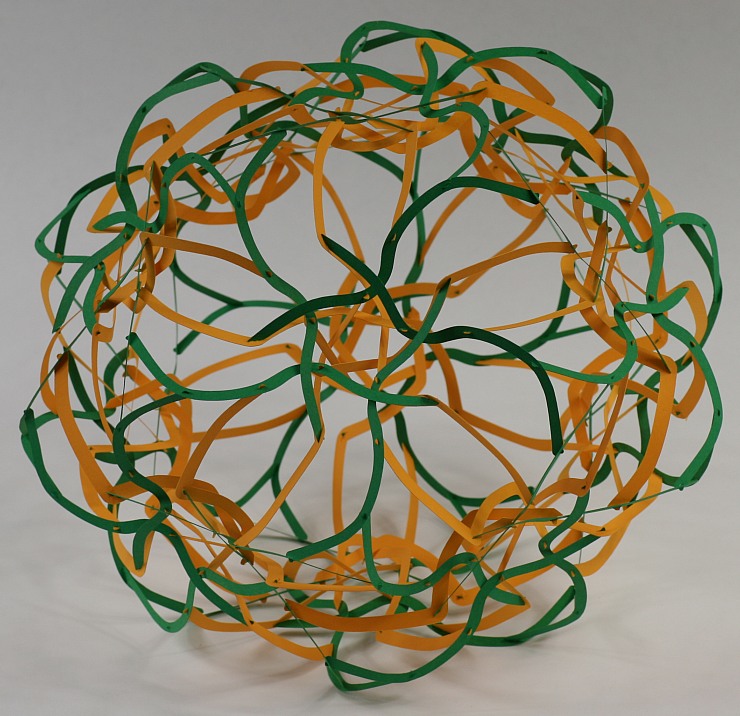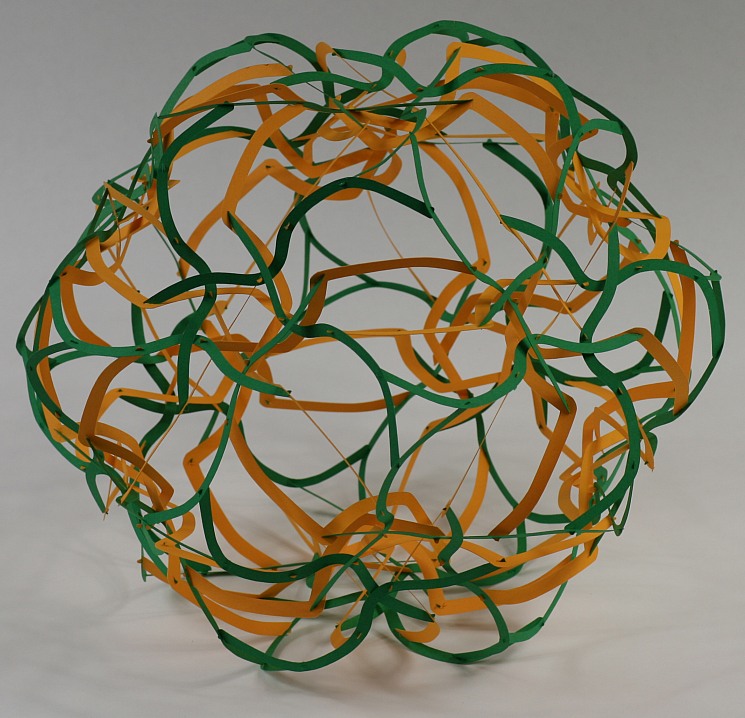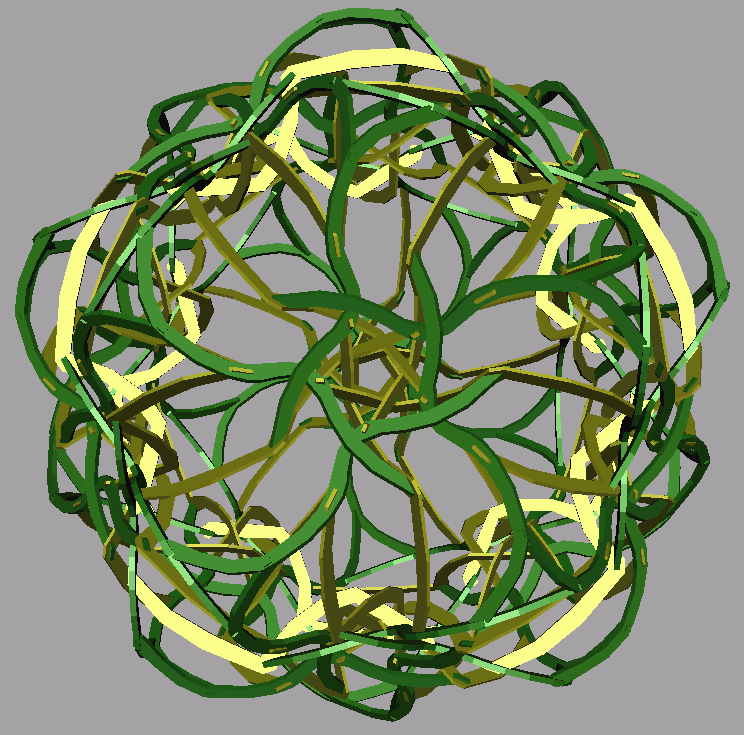Each part is flat, i.e., it lies in a plane as it wiggles around its
neighbors. This computer rendering with thicker parts might make
the form clearer:
But the most interesting thing about
the design is that at every joint the connection is 90 degrees. This
means every tab fits perpendicularly into its mating slot. How
can so many planes be perpendicular to so many other planes? The answer
derives from the fact that the green parts lie in the face planes of a
rhombic triacontahedron (which contains the planes of five cubes) while
the yellow parts lie in the face planes of a regular dodecahedron
(which are each orthogonal to ten of the planes of the
triacontahedron). The sculpture design uses each of these many
orthogonalities. The image below is centered on a 3-fold axis, where
three planes come together like the corners of a cube:
So far, I have only made this design in paper. It is possible to
make it with a stiff metal, similar to
Spaghetti Code, which also uses only 90
degree joints. There is a high-resolution image available
here.




